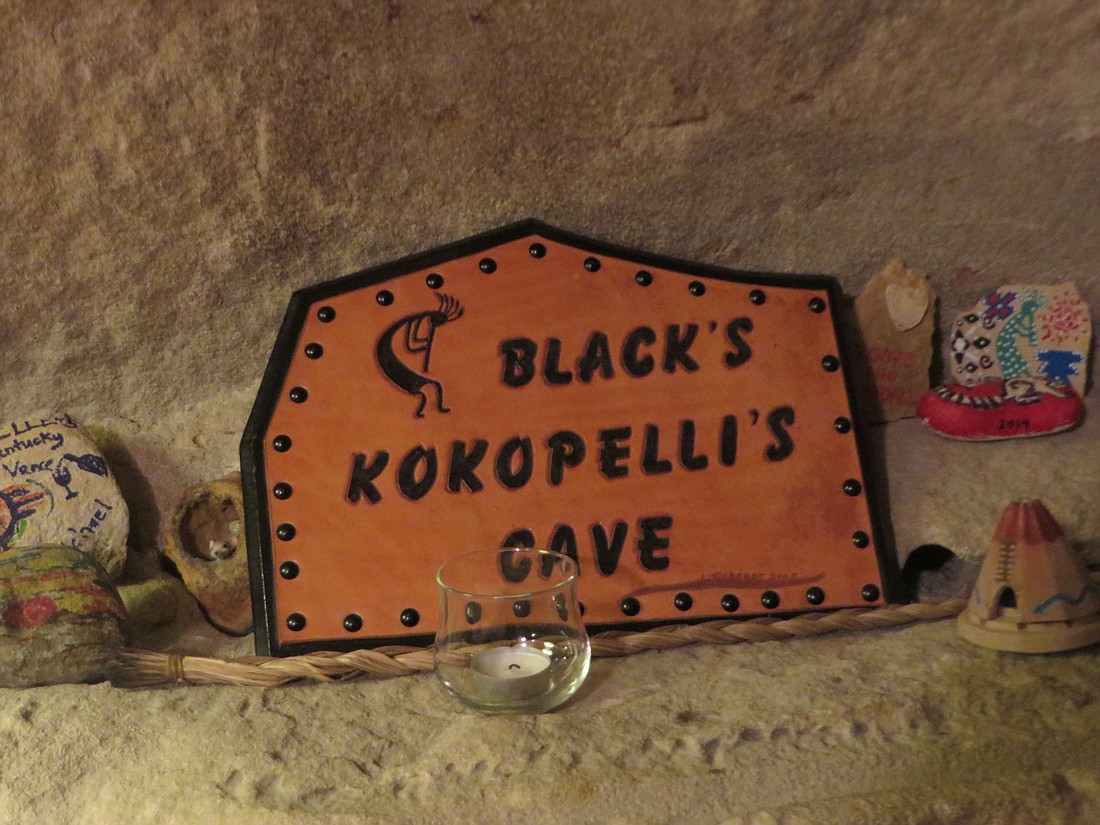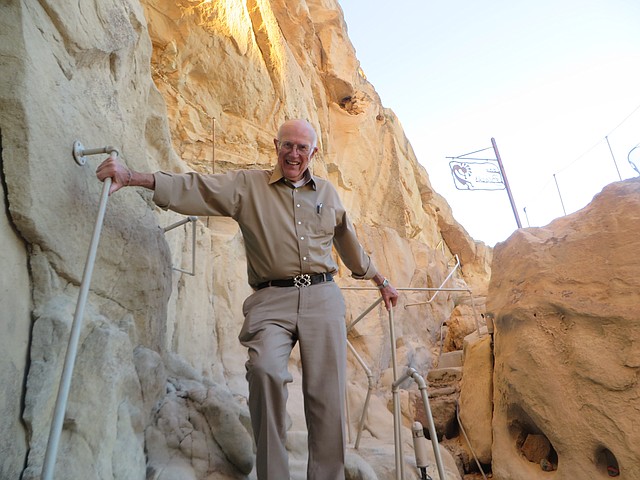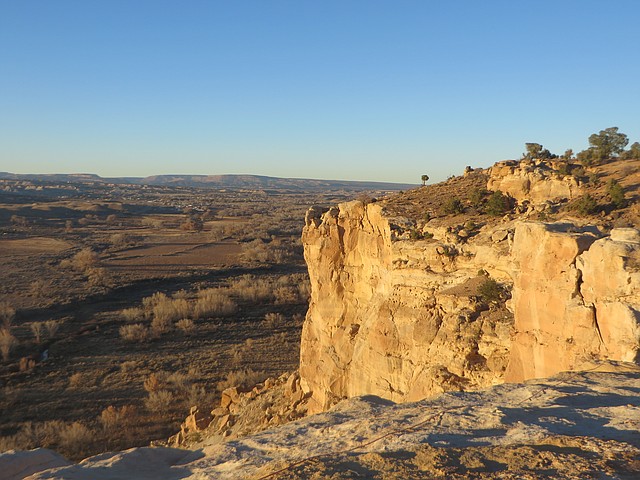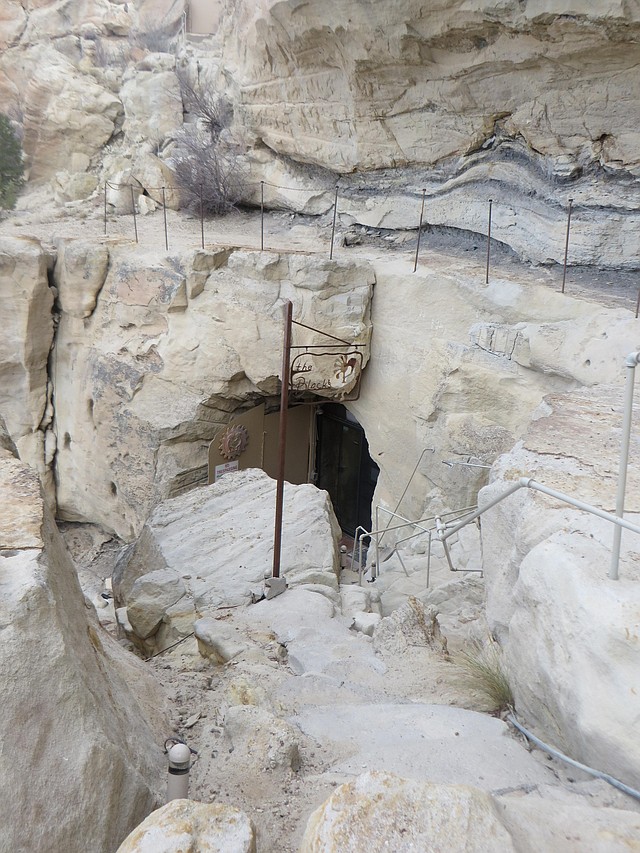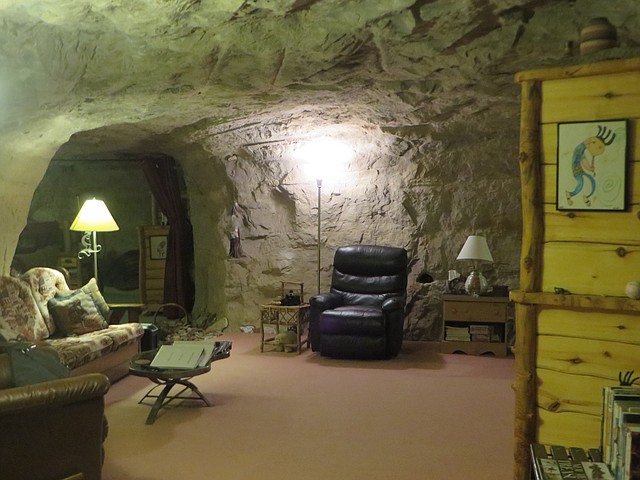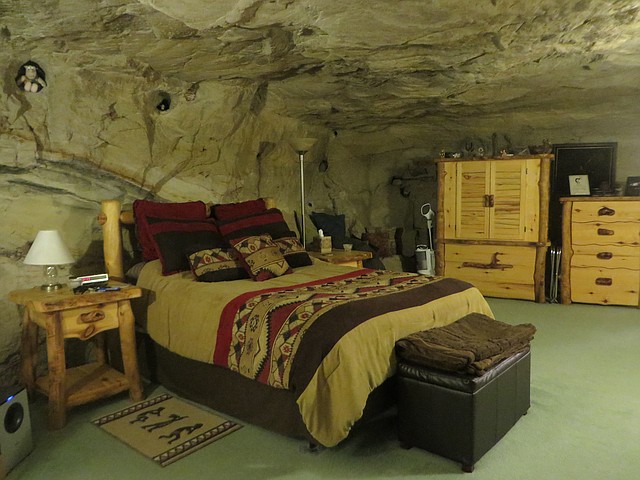The Anasazi never had it so good!
December 19, 2016 at 6:00 a.m.
I’ve stayed in a number of interesting places over the years, including an ice hotel, treehouse, yurt and even an Earthship. But, I think the most unique accommodations to date has to be a cave. You’re probably thinking, as I did initially, that such subterranean quarters would be dark, damp and claustrophobic. Kokopelli’s Cave, however, isn’t anything like you’d imagine. It’s akin to a five star B&B, complete with all the amenities you’d find in a luxury inn.
This unusual lodging option is a northern New Mexico gem and though it may be hidden from public view, it’s actually an international phenomenon, booked solid months in advance. The place has received rave reviews in numerous magazines and newspapers, and has been featured on T.V. shows such as “CBS Morning Show” and the “Oprah Winfrey Show.” It is currently ranked third in the world for “unusual accommodations” by National Geographic.
The story begins in 1980 when Bruce Black, a retired Rear Admiral and professional geologist, had the idea to build his office in a cave. He owned land in Farmington, New Mexico, where he had been living and working as an explorative geologist for the Shell Oil Company, then later as a consultant. He was inspired by American Indian architecture and wanted to create a hideaway reminiscent of those of the Anasazi, but he discovered that logistically, there were challenges. “I came to the conclusion that it would be unrealistic for my clients, especially those who were older, to be expected to navigate their way down to the cave to see me,” explains Black. At this point, he had already spent $20,000 to blast the rock in a 65 million year old sandstone formation above Farmington and had lowered a Bobcat down to excavate. A decade went by without Black doing anything more and then his son Buzz returned home from his stint in the Armed Services. “He encouraged me to finish the place and then he actually lived in it for a year,” adds Black.
Eventually, a newspaper got a hold of the story and the calls started to come in fast and furious from people all over the country who wanted to come stay in the cave. Black, realizing its potential, decided to open the place as a B&B and the rest, as they say, is history. The first guests started arriving in June of 1997 and they haven’t stopped since, with word-of-mouth generating momentum and popularity. They come from all corners of the U.S. and from around the globe, as far away as Australia. Those who make the trip do so for various reasons. “We have people who are on vacation, traveling through the Southwest,” says Black. “Then there are those who are celebrating special occasions such as anniversaries and birthdays. We’ve even had a few wedding proposals happening right here.”
The place is built into the vertical cliffs overlooking the beautiful La Plata River Valley some 270 feet below. From the cave and the cliff tops, you have a panoramic view across the Four Corners flatlands with iconic Shiprock peak (a sacred site for the Navajos) rising in the distance, nearly 35 miles to the west, along with Arizona’s Carrizo Mountains and Colorado’s Ute Mountains. The area is considered a hub for visiting major Native American sites including Chaco Canyon, Mesa Verde, Aztec Ruins National Monument and the Four Corners Monument.
The cave itself is seventy feet below the surface and the entrance is located in the cliff face. Getting to this manmade wonder is part of the adventure. First, you check in at the manager’s house in Farmington. There, Gayle Davis warmly greets you, hands you a walkie talkie for communication purposes and asks you to follow her in your car. As you traverse the dirt road leading to the cave, she points out some landmarks to remember so you don’t get lost coming out of the area. There’s also a map provided, but it’s best to pay close attention to the visual markers mentioned. Once you arrive at the parking area atop the cliff, you’ll need to take your things from the car and ready yourself for the next part of the journey. Wheelie bags have no place here – backpacks are strongly recommended – as you’ll be climbing down a set of hand-hewn carved stairs, in mountain goat fashion. The steps form switchbacks and thankfully, there are handrails for assistance. Along the way, the cliff walls detail ancient fluvial channel streams that have been preserved in the stone. You can also see coal deposits and samples of petrified wood that have been captured in these stream beds. According to Black, you actually pass through five prehistoric periods before arriving at the door to the cave.
Your first step into the cave will certainly be the most memorable. It’s one of those jaw-dropping moments when you realize just how amazing this hideaway is and you gasp in astonishment. It’s huge! 1750 square feet of living space to be exact, with eight-foot ceilings. There’s a spacious master bedroom with a deck, accessed by a sliding glass door; a well-appointed kitchen, which leads to a dining area adjoining a replica of a Native American kiva with a wood-burning “horno” or fireplace; and a bathroom that boasts a waterfall shower and flagstone Jacuzzi tub. The living room has plush carpeting, a queen sized hide-a-bed sofa, full-sized futon and two recliners, along with a TV /DVD and VCR player complete with an ample selection of movies. There’s also a sliding glass door at the entrance, leading to another porch. Here you can barbeque using the available grill, while enjoying a fiery sunset. With the exception of the bedroom and bathroom, all the rooms are situated around a central sandstone pillar, which separates the cave into its component spaces.
Of particular note is the kitchen. It’s one that Wilma Flintstone would have lusted after, as it contains a stove/oven, microwave and fridge. And it’s completely stocked with an assortment of breakfast and lunch items. No meals are served at Kokopelli’s, but there’s plenty of food available, and you are encouraged to bring your own fixings for dinner. Or if you want to dine out, you’re free to drive back into town where a number of restaurants are located. Most people prefer to eat in, as they aren’t interested in navigating the winding, bumpy roads in the dark with the chance they might get lost.
As the cave is truly a destination in itself, you’ll want to spend time just savoring all of its unique elements. It’s a cozy, comfy abode, with a consistent temperature of 68 to 73 degrees Fahrenheit year-round. In the summer, it’s nice and cool thanks to the insulating stone, and plenty warm in the cooler months. There’s light coming through the glass doors and floor lamps to illuminate the space. Bruce’s wife and daughter are responsible for the lovely décor, which features handsomely crafted southwestern style furniture and touches of Pueblo pottery, Navajo rugs and sand paintings. Previous guests have added to the ambiance by inscribing small rocks with family names and expressions, which are then piled into baskets or set along the walls.
For Black, the B&B has been a labor of love. He takes pleasure from the feedback he receives, which is always incredibly positive. “The vibes about this place are wonderful,” he comments. “Everyone loves it, which is so gratifying to me.” The numerous three-ring binders full of comments are testament to the special feelings the cave elicits in its guests. They note its posh “cave comforts,” fascinating geological features, inspiring views, the diverse array of critters who make their home in the area, and most of all, the peace and quiet that comes from being nestled inside this distinctive dwelling.
Kokopelli’s Cave is open March through November, with a two-night minimum stay. For more information: www.kokoscave.com
Deborah Stone is a travel and lifestyle writer, who explores the globe in search of unique destinations and experiences to share with her readers. She’s an avid adventurer who welcomes new opportunities to increase awareness and enthusiasm for travel and cross-cultural connections. Her stories appear in a number of publications as well as on various travel websites. Additionally, she can be frequently be heard dishing travel with the hosts of the NPR-affiliated and AARP produced talk radio show, “2 Boomer Babes.” Deborah is a longtime Seattle area resident, who currently resides in Santa Fe, New Mexico.
